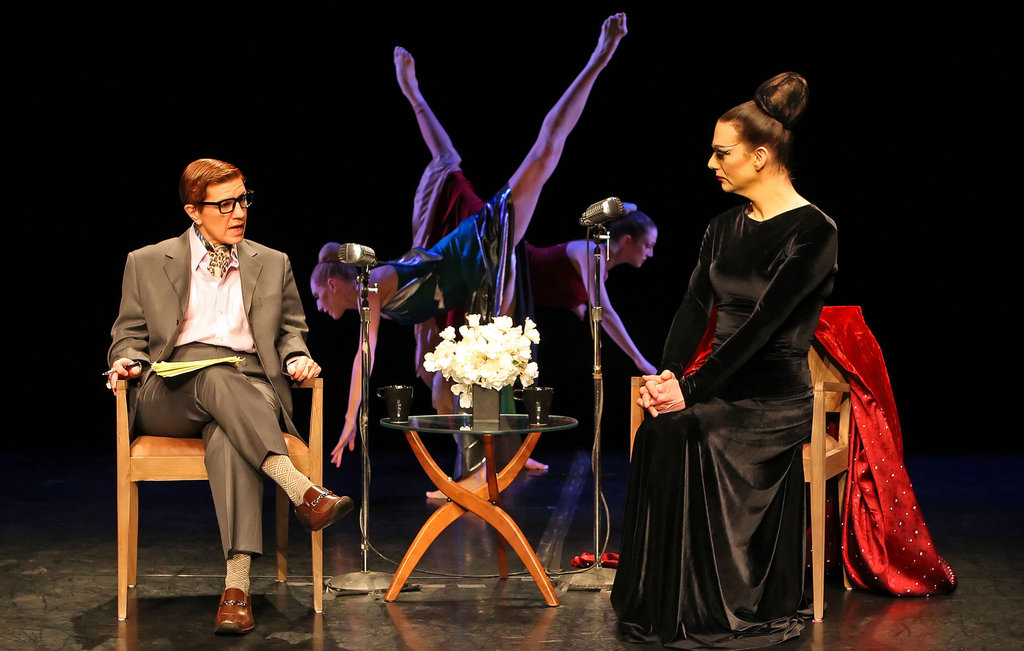Ice skater, choreographer, and Brownbody founder Deneane Richburg admits that undoing internalized white ideologies—including the expectation of constant productivity—is an ongoing process. Having resisted the obligation to produce a slew of online content during the pandemic, she and Associate Artistic Director Lela Aisha Jones offered a casual Zoom “informance” which dove deeper into the “hows” and the “whys” of Brownbody’s work. Inviting attendees to ask questions as they shared rehearsal and performance footage, they discussed their approach to collaboration and creation in this Philadelphia Dance Projects presentation.
Richburg grew up in the competitive skating world in suburban Minnesota, often feeling alienated as a Black athlete in an overwhelmingly white field. After an injury, she began to focus on the choreographic aspects of the form, pursuing a MFA in dance with a desire to center Blackness on the ice. Thus emerged Brownbody, combining skating and modern dance to tell Black histories in ice productions that are both theatrical and intimate (audience members are even seated on the ice). Jones, a dance artist and community organizer, joined to bring in an outside eye rooted in off-ice performance traditions.
Though the roles of their collaboration are intentionally fluid, Richburg is the primary ice choreographer while Jones provides dramaturgical guidance and studio training drawing from improvisational, Afrodiasporic, somatic, and theatrical movement to help performers move and emote outside of the frame of traditional skating technique. — Their process includes collaborating with practitioners in other forms—and two happened to be in the Zoom room: Poet/singer Thomasina Petrus and musician Alex Shaw.
For Richburg and Jones, diffusing creative power away from a single leader is an intentional decolonial choice. They find this approach at odds with the extreme individualism of the art world, which largely funds and celebrates individual “genius.”
At a glance, “process-oriented collaboration” sounds more buzzword than anomaly in the contemporary performance world. Yet, there remains a particular individualism forced upon marginalized artists who are often only accepted as exceptional tokens. For instance, Jones recounts how she has become a go-to “expert” on African diaspora dances in Philadelphia, though she would rather see a variety of perspectives highlighted.
In addition to the artists’ deliberate articulation of collaboration as resistance to tokenization, what feels refreshing is their parallel commitment to financial transparency and fair compensation. (Too often “community” and “collaboration” become a guise for exploitation, as many choreographers are willing to accept star status for material created by their undercompensated dancers.) It’s equally heartening to hear Jones speak about the care and recovery time she builds into processes that activate trauma due to new ways of moving or emotionally loaded content (as “emotional vulnerability” is too often a guise for psychologically damaging rehearsal environments).
The short clips from from Brownbody’s recent works: Quiet as it’s Kept, which explored the Reconstruction Era and the Rise of Jim Crow laws, and Tracing Sacred Steps which drew inspiration from Ring Shouts, a sacred dance practiced by enslaved people, aren’t sufficient to trace the narrative arc of either work. But we do sample the wide array of movement vocabularies, often blending seamlessly, in a chat that centered process and values. In Tracing Sacred Steps, swinging heads and torsos stack over smooth traveling; grounded, rhythmic footwork somehow escalates into soaring spinning jumps. The asymmetries between genres become more apparent as toe loops and flips from skating seem out of place amongst more organic and gestural choreography. It’s perhaps not a choreographic failure so much as a reminder of the opposing value systems within the choreographer’s history: competition and connection, virtuosity and vulnerability.
As the directors explained the many difficulties of ice as a medium, from the practical challenges of securing rehearsal space to the physical challenges of embodying aesthetics outside Eurocentric ideals, I was curious about why they continue to choose ice as their conduit for Black stories. Richburg pointed to the inherent momentum, flow, and power of skating, which enhance the company’s theatrical approach. But skating is simply so ingrained in her from early training, she confesses, “it’s how I think.” It’s a sentiment I understand as an Arab-American choreographer still attached to Eurocentric notions of dance technique from my training, hesitant to commit to any version of decolonization that would pull me away from them entirely. For better or worse, movements never made for our bodies can come to feel like home. Forms that have alienated us can become our best language to express that alienation.
I’m intrigued to see how Brownbody will push their discipline forward, reclaiming it on their own terms, expanding notions of who can skate and just how much can be expressed through its practice.






